12 Best Fall Flowers to Plant Now, Gardeners Say

Most gardeners put in the bulk of their planting work each spring, just as temperatures begin to rise and flowers start to bloom. However, it’s not the only time of year when you can get things into the ground. A quick autumn refresh is a great way to get a little more longevity out of your yard and to set certain species up to thrive. Read on for the best fall flowers to plant, according to gardeners.
RELATED: Never Do These 4 Things to Your Garden in the Fall, Landscaping Expert Says.
1
Pansies
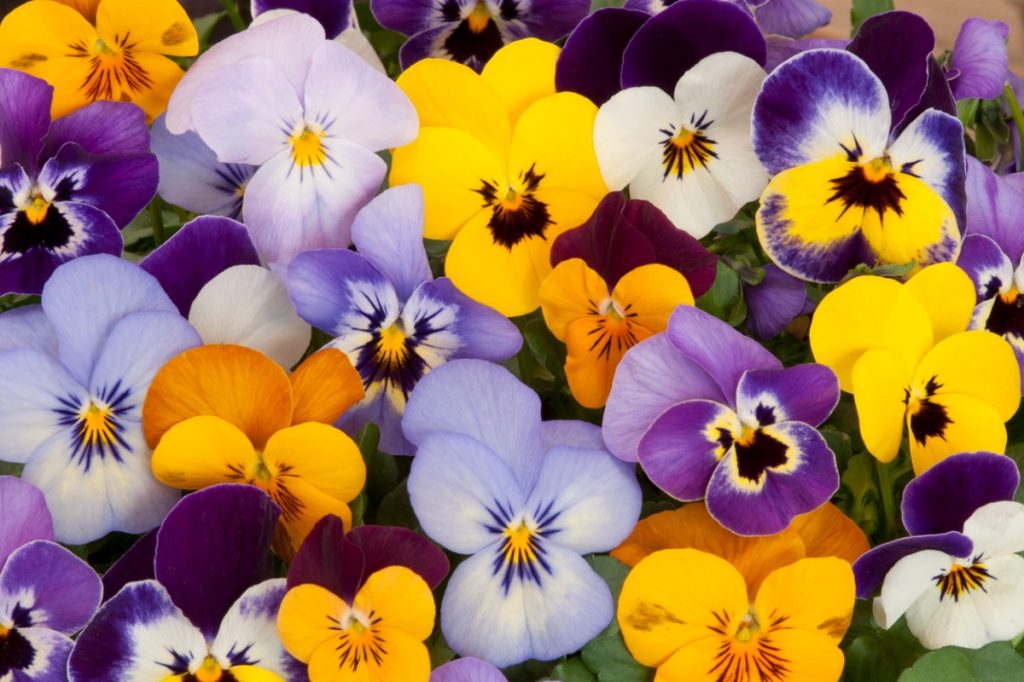
When choosing which flowers to plant in the fall, it’s important to select plants that thrive in cooler temperatures and can beautify your garden into the colder months. That’s why Gene Caballero, landscaping expert and co-founder of GreenPal, says pansies are a particularly great choice.
“They can survive frosts and even some freezes,” he tells Best Life. “They also come in a variety of vibrant colors, ensuring your garden remains lively even as temperatures drop.”
And they’re not just good to look at: They might also find their way into your kitchen.
“Pansies—as well as violets—can be enjoyed raw or cooked in dishes, which is a bonus to them flourishing in cooler temperatures,” says Shane Brill, campus garden director and permaculture expert at Washington College.
2
Lantana
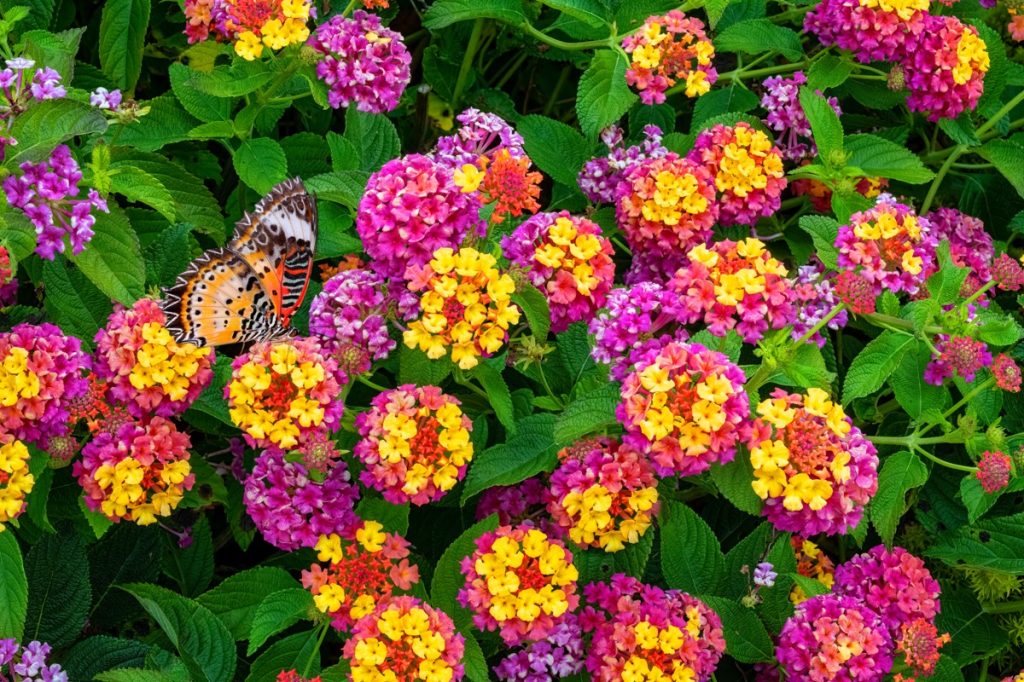
The vivid colors of fall foliage provide something to look forward to each autumn, but your trees don’t have to be the only source of color throughout the season.
“Lantana is an extremely hardy, sun-loving perennial that produces colorful clusters of flowers in various shades of red, lavender, orange, white, yellow, and pink throughout the fall,” says Amy Hovis, owner of Barton Springs Nursery. “We love trailing purple lantana for gorgeous pops of lavender that last from late spring throughout the summer, until the first frosts in autumn.”
Doing some more intricate landscaping work? She adds that lantana’s continuous bloom and ability to attract butterflies and other pollinators make it a favorite for planting within rocks or trails through a landscape.
3
Maximillian Sunflowers
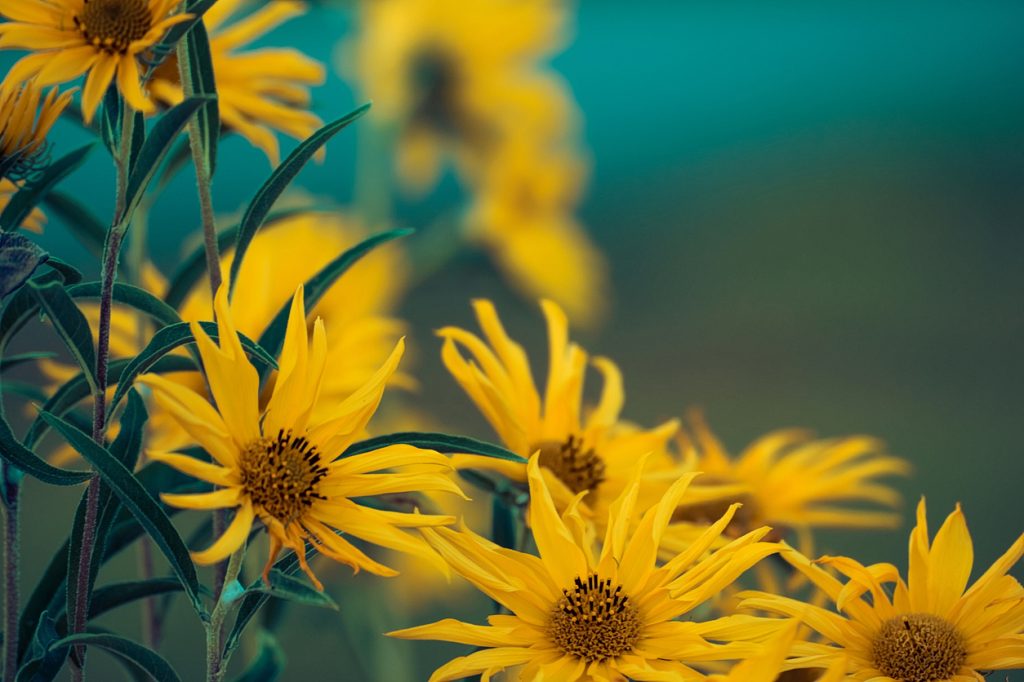
Just because summer is winding down doesn’t mean you can’t still have plenty of sun in your yard. In a video posted on TikTok, home gardening influencer @GardeningAddiction shares that Maximillian sunflowers can provide that bright yellow pop all throughout autumn.
While these flowers may not have the same large, broad blooms as traditional sunflowers, they do have one notable characteristic in common. “They can get really, really tall if you water them a lot!” she says.
RELATED: The #1 Plant to Give Your Yard a “Mass of Blooms” This Fall.
4
Mums

Vibrant pops of color don’t have to disappear once summer temperatures begin to cool off—not if you include mums in your garden, at least.
“They provide a range of striking colors from bright yellows to warm oranges and are quite iconic in the fall,” says Michael Clarke, founder of Yardwork, an online nursery and landscaping platform. “Their dense bloom structure provides vibrant, full displays in gardens and containers.”
5
Chamomile

Looking for a versatile late-season flower? Brill says chamomile is a fantastic option for gardeners who like to get a little more out of their plants.
“Chamomile prefers cool and dry conditions and is cherished by pollinators,” he explains. “The fragrance of its golden blossoms hints at the redolence of apples or melons, which is alluded to in the ancient Greek origins of its name.”
He adds that the flowers are famous for their calming effect when enjoyed as a tea and may help to improve sleep and anxiety. And the benefits don’t stop there.
“In my nutritional therapy practice, I often suggest chamomile to support digestive issues, dampen seasonal allergies, and reduce histamine response,” he says.
6
Gregg’s mistflower
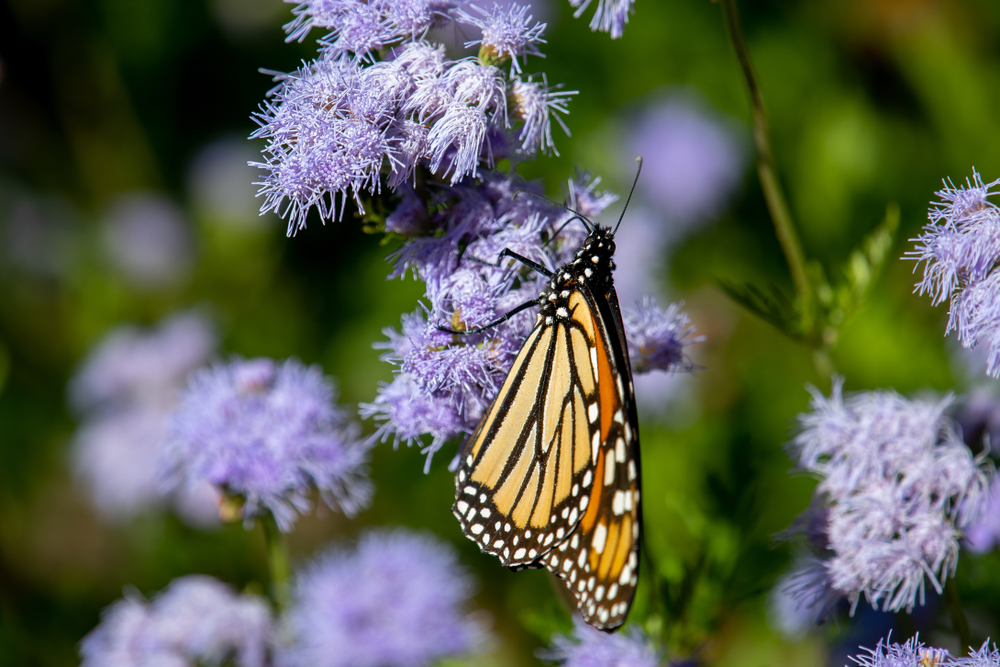
When planning for September and October, Hovis says she not only wants to consider a pop of color but necessary habitat and food sources for birds, butterflies, and beneficial insects. That’s where Gregg’s mistflower comes in.
“This perennial plant loves sun and produces clusters of small, fluffy, lavender-blue flowers,” she tells Best Life. “It’s a favorite among pollinators and can provide a burst of lavender in your garden during the fall.”
The best part? It’s a magnet for butterflies and all but guarantees they’ll flock to your garden.
RELATED: 7 Best Spots in the U.S. to See Fall Foliage This Year.
7
Calendula
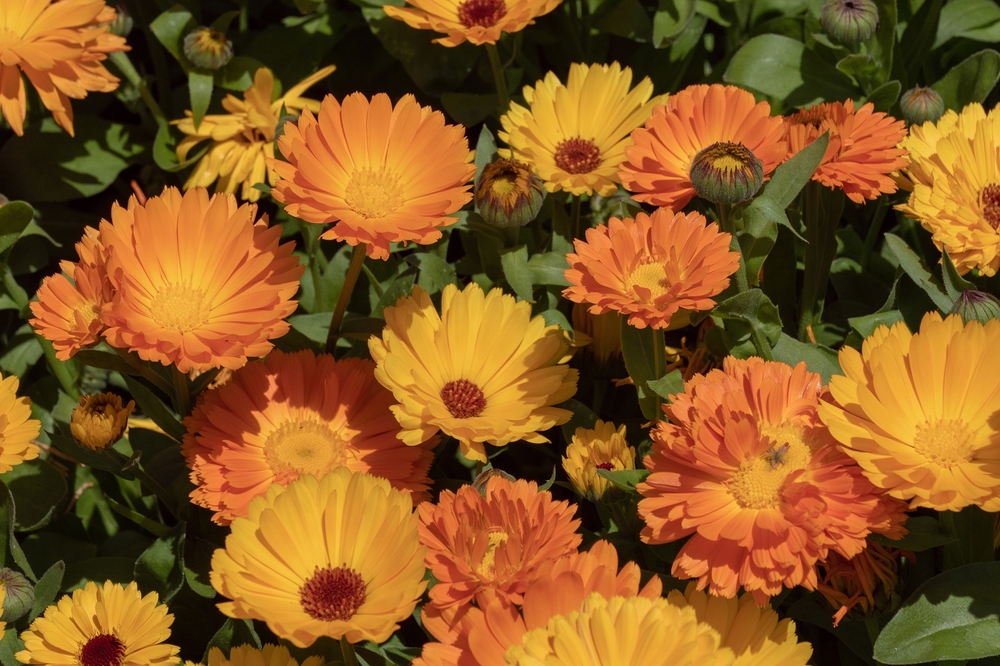
Planting perennials does double duty, readying your garden for fall and spring. That’s why Brill recommends calendula.
“This flower, which is also known as pot marigold, brings both beauty and function to the garden, offering continuous blooms in full sun until extreme cold or heat knocks it back,” he says. “It makes a great companion plant, deterring a variety of common garden pests, and reseeds itself each year.”
Brill adds that the whole dried flowers are used to make oils and salves that soothe dry and inflamed skin, and that they’re both easy and safe products for budding herbalists to make.
8
Poppies
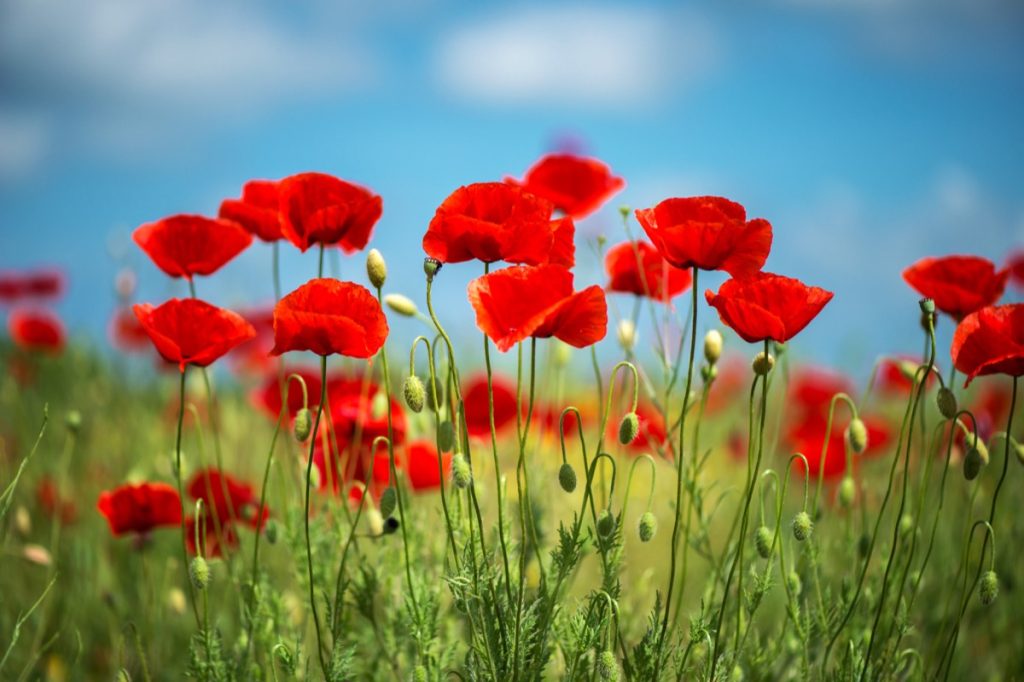
If you’re hoping for some stark red pops in your garden come fall, consider picking up some poppies.
Besides their brilliant blossoms, these flowers are some of the easiest to plant, only requiring you to sprinkle seeds on top of the soil where you want them to sprout, according to Birds & Blooms. In fact, since they require light to initiate their germination process, it’s best to avoid the urge to push them into the soil or bury them.
There’s also an element of surprise with these flowers, with some fall plantings sprouting before the end of the season or possibly over the winter, even in colder climates, per Birds & Blooms. And if you’re looking to expand your planting the following season, simply let some of the early-sprouting flowers dry out and scatter their seeds come autumn.
9
Turk’s cap
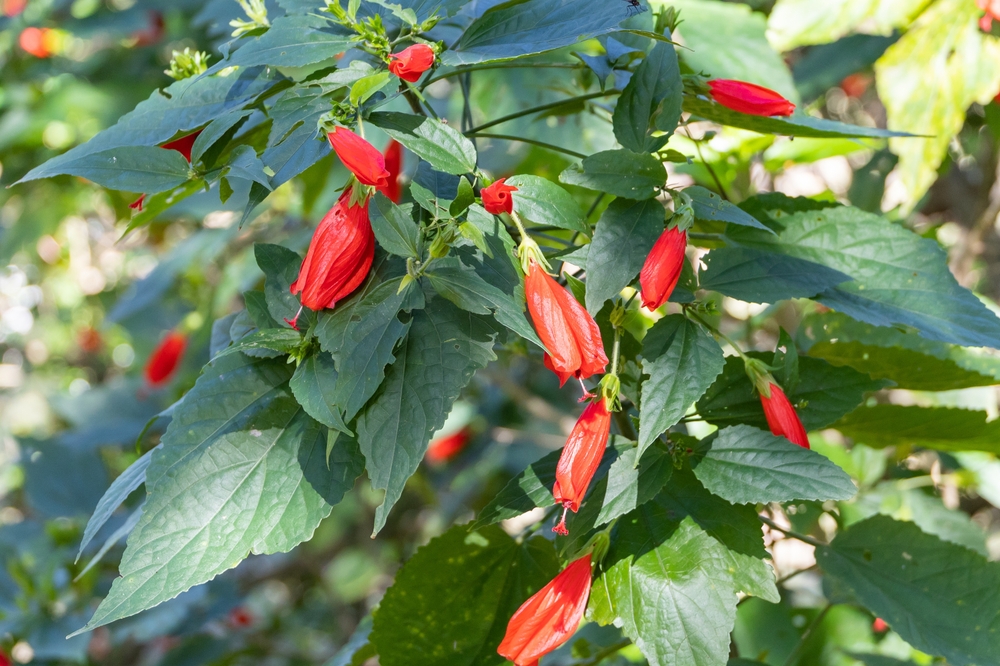
Instead of leaving the part of your yard that doesn’t get much direct sunlight bare, opt for a flower that can still flourish there.
“Turk’s cap is a favorite perennial that produces unique red, hibiscus-like flowers with deep green foliage,” says Hovis. “It’s well-suited for shade gardens and attracts hummingbirds. It’s also a wonderful plant to use under larger trees, and the bright red flowers bring great fall color to a landscape.”
RELATED: Best Reasons to Stop Raking Your Leaves, Experts Say.
10
Fall aster
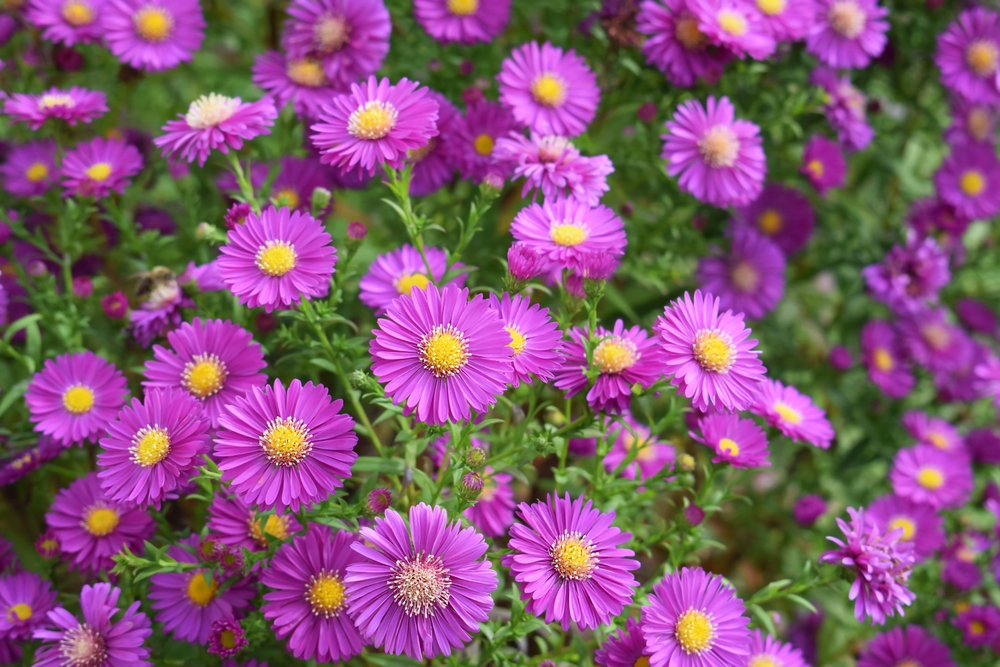
Looking for a plant that looks great and is easy to take care of? Consider fall asters.
“These plants are known for their daisy-like flowers that come in shades of purple or lavender that bloom in the fall,” says Hovis. “They are easy to grow, very hardy, and drought-tolerant once established. They add vibrant color to gardens and landscapes during the fall months.”
And that’s not all: According to Caballero, they also attract pollinators, such as bees and butterflies, that are still active in the early fall.
11
Goldenrod
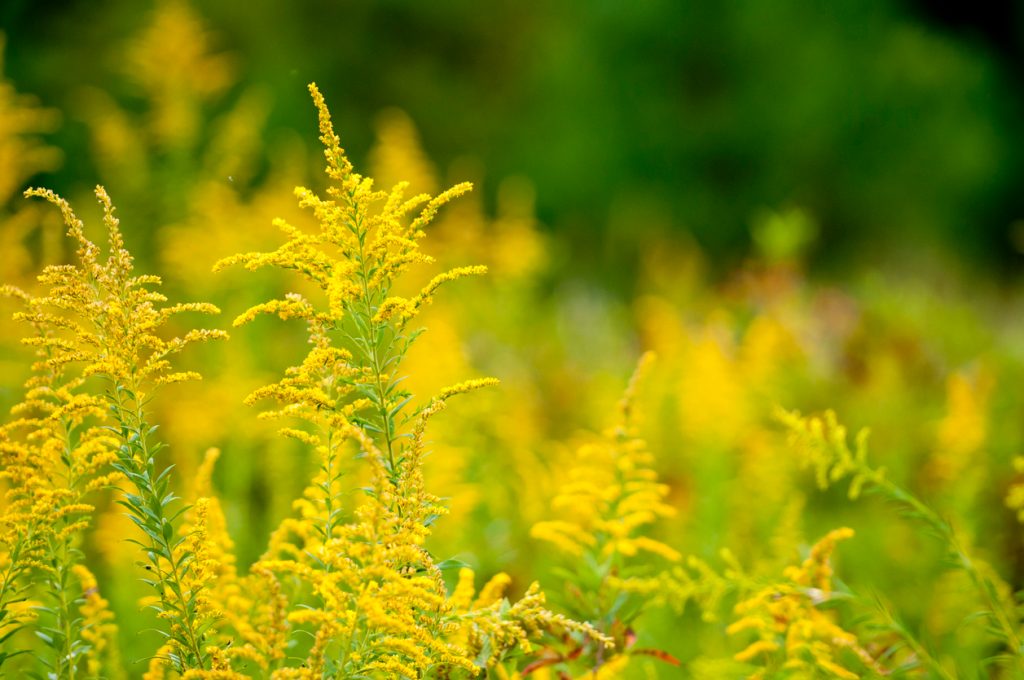
If you’re going for a wildflower look in your garden, Hovis recommends goldenrod.
“Goldenrods are tall, upright plants with bright yellow flowers that bloom in late summer and fall,” she says. “They are valuable for supporting pollinators and wonderful for bringing vibrant autumn color to your garden.”
But be careful if you’re sensitive to pollen—these attractive plants are notorious for making people sneeze.
12
Sedum
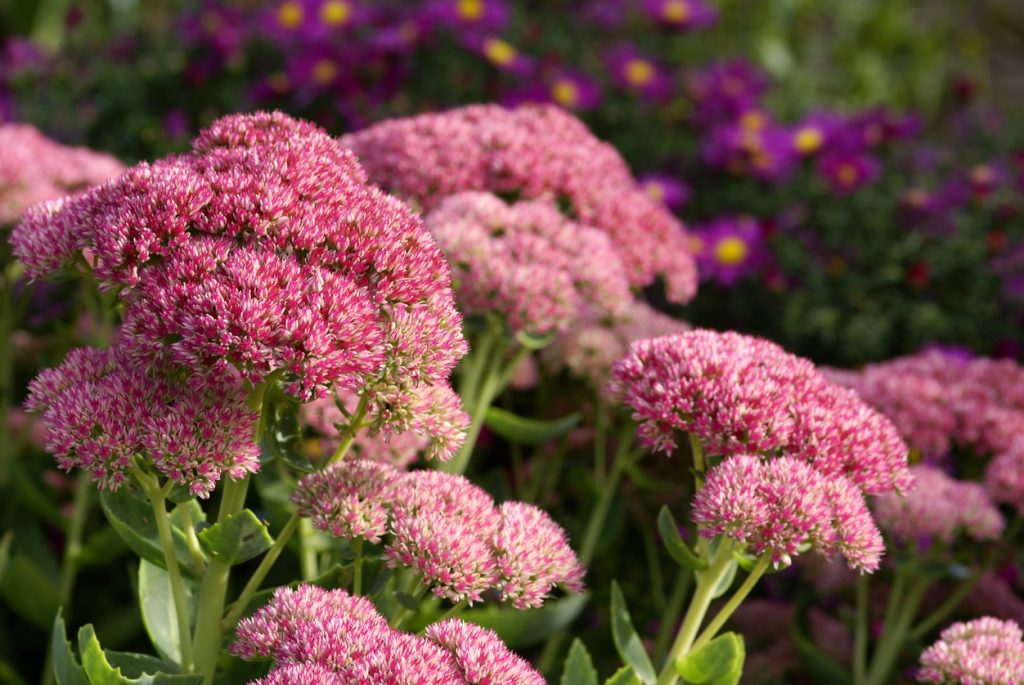
Gardeners in the know love planting sedum (also known as “autumn joy”) come fall. Not only do the flowers provide brilliant pops of purplish pink, but they’re also a standout pollinator.
“I love my Autumn Joy sedum!” one happy greenthumb wrote in a discussion thread on the r/Gardening subreddit. “And to propagate it, you can just stick even the littlest tiniest piece in the ground and it will grow a whole new plant!”